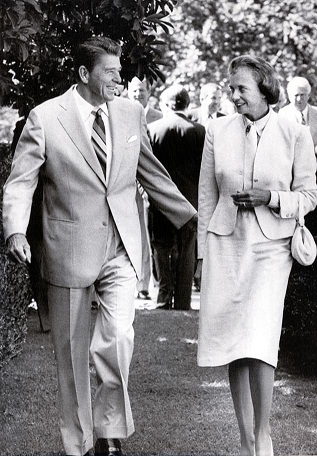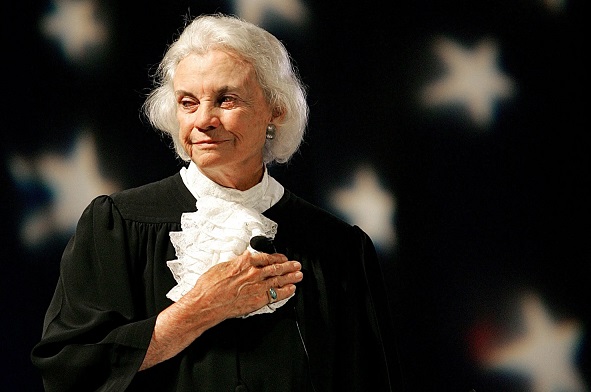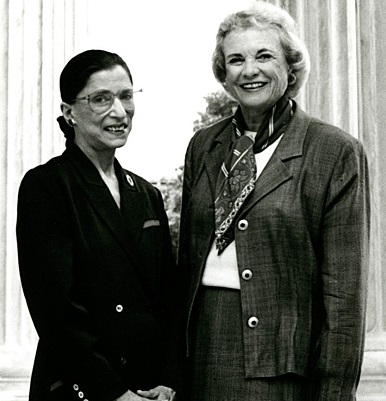How Conservative Supreme Court Justice Sandra Day O’Connor Helped Defend Roe!
FEATURED PHOTO: THE FIRST WOMEN ASSOCIATE SUPREME COURT JUSTICE SANDRA DAY O’CONNOR AND WOMEN’S RIGHTS ADVOCATE
Yahoo.com, By Alexander Nazaryan-YAHOO NEWS, SENIOR WHITE HOUSE CORRESPONDENT
Though she supported limits on the procedure, O’Connor believed in a woman’s ultimate right to terminate a pregnancy.
The first question then-President Ronald Reagan got when he announced on July 7, 1981, that he was nominating Arizona appellate Judge Sandra Day O’Connor to become the first woman to serve on the Supreme Court was about whether she was sufficiently opposed to abortion.

“I am completely satisfied,” Reagan said.
But in the years to come, O’Connor, who died on Friday at the age of 93, would evolve to become a thoughtful, moderate defender of Roe v. Wade, the 1973 decision that established the constitutional right to an abortion, and which was struck down last year by an increasingly ideological court, reflecting the country’s deep partisan divisions.
Opposed by the religious right
A former Republican state legislator in Arizona, O’Connor was seen as a solid anti-abortion nominee for the Supreme Court. “Right to Life people say she’s pro-abortion. She declares abortion is personally repugnant to her. I think she’ll make a good justice,” Reagan wrote in his diary.
But the increasingly emboldened Christian right was not convinced, and they regarded Reagan’s decision to nominate her to the high court as a betrayal.
“By this appointment, you have betrayed pro-life,” one abortion opponent wrote to Reagan.
A distaste for Roe
O’Connor first confronted the abortion question in 1983, when the court heard arguments in Akron v. Akron Center for Reproductive Health, a challenge to the Ohio city’s restrictions on how easily a woman could terminate a pregnancy. The restrictions were struck down, but O’Connor sided with two other conservatives, Byron White and William Rehnquist, in opposing the majority.
“I believe that the state’s interest in protecting potential human life exists throughout the pregnancy,” she wrote in her dissent, taking issue with Roe’s emphasis on the question of when, in the course of the pregnancy, a woman sought termination.

A consistent moderate
O’Connor became known as the court’s crucial “swing” vote, and attorneys knew that a case could rise or fall on how she ruled. “She effectively controlled the Court because she was a moderate who believed in compromise,” Evan Thomas wrote in his biography of O’Connor, First.
On no issue was that moderation more obvious than abortion.
The struggles of her own son and his wife to have a child “deepened” O’Connor’s understanding of pregnancy, Thomas wrote. But it did not fundamentally shift her belief that the high court should approach the issue with humility.

A 1989 case originating in Missouri known as Webster v. Reproductive Health Services offered conservatives a fresh possibility to overturn Roe. Again she demurred, agreeing that Missouri had the right to put limits on abortion access but not to overturn Roealtogether. “There is no necessity to accept the State’s invitation to reexamine the constitutional validity of Roe v. Wade,” she wrote in a concurring opinion.
In the annals of abortion law, few cases are as important as Planned Parenthood of Southeastern Pennsylvania v. Casey, argued before the Supreme Court in 1992. Once again, the question was just how severely a state could restrict abortion without running afoul of the protections enshrined in Roe.
Another moderate justice, Anthony Kennedy, worked to persuade O’Connor and Justice David Souter that Casey should not be used as a means to overturn Roe. The court ultimately upheld Roe while allowing for restrictions on abortion, provided they did not constitute an “undue burden.”
“A State may not prohibit any woman from making the ultimate decision to terminate her pregnancy before viability,” Kennedy, O’Connor and Souter wrote in their opinion.
O’Connor would remain on the court until 2006, when she retired to care for her ailing husband. In a 2013 interview with the radio program Fresh Air, she reflected on her work in preserving abortion rights.
“I’m a female, I’m a mother,” she said. “I’ve gone through all of that.”








